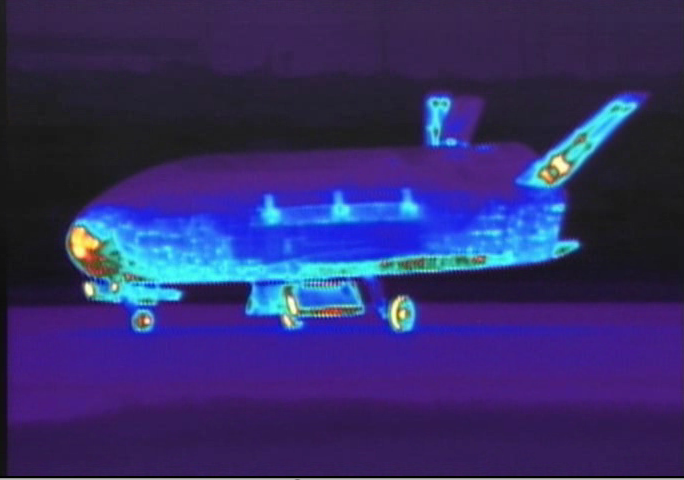Classified Air Force Space Plane Launches on Secret Mission

A classified military space plane blasted off into orbit Tuesday (Dec. 11) on the third mission of the U.S. Air Force's X-37B program.
The X-37B vehicle, also called Orbital Test Vehicle-3, or OTV-3, launched atop an Atlas 5 rocket from Florida's Cape Canaveral Air Force Station (CCAFS) at 1:03 p.m. EST (1803 GMT).
The Air Force has been secretive about the details of the space plane's mission and its classified payload, which sits in a payload bay about the size of a pickup truck bed. Experts have suggested the vehicle could be used for materials science, space surveillance, imaging and reconnaissance. The mission is being managed by the Air Force Rapid Capabilities Office.
Mini space shuttle
The X-37B is 29 feet (8.8 meters) long and 15 feet (4.5 m) wide, and looks like a miniature space shuttle. It's built by Boeing Government Space Systems. According to an Air Force factsheet, its purpose is "to demonstrate a reliable, reusable, unmanned space test platform for the United States Air Force." [Photos: U.S. Military's X-37B Space Plane]
This is the third flight of an X-37B spacecraft; the program's last mission landed June 16 after spending 469 days in orbit.
The vehicle launched today is the same craft that flew on the very first flight of the program, the OTV-1 mission back in 2010. That flight launched on April 22, 2010 and put the X-37B into space for a little over 224 days, before it landed Dec. 3, 2010.
Breaking space news, the latest updates on rocket launches, skywatching events and more!
The X-37B vehicles make their autopilot landings on a specially prepared runway at Vandenberg Air Force Base in California.
Flight delay
Today's launch was delayed for several months past its original target to allow time for an investigation into the cause of a rocket failure that occurred on Oct. 4. On that day, a Delta 4 booster lifted off to carry a Global Positioning System 2F-3 satellite into orbit. Although the satellite reached its destination safely, the rocket's RL-10B-2 upper stage engine did not perform as expected.
Because the Delta 4 is built by the same company that makes the Atlas 5 — United Launch Alliance (ULA) — mission managers had to take that anomaly into account before launching the X-37B on the Atlas.
The accident investigation board found that a fuel leak in the interior of the rocket engine's thrust chamber occurred during the first engine start sequence. While ULA is still looking into all the details of that failure, today's launch was cleared after all potential implications for the Atlas 5 were addressed.
You can follow SPACE.com assistant managing editor Clara Moskowitz on Twitter @ClaraMoskowitz. Follow SPACE.com on Twitter @Spacedotcom. We're also on Facebook & Google+.

Clara Moskowitz is a science and space writer who joined the Space.com team in 2008 and served as Assistant Managing Editor from 2011 to 2013. Clara has a bachelor's degree in astronomy and physics from Wesleyan University, and a graduate certificate in science writing from the University of California, Santa Cruz. She covers everything from astronomy to human spaceflight and once aced a NASTAR suborbital spaceflight training program for space missions. Clara is currently Associate Editor of Scientific American. To see her latest project is, follow Clara on Twitter.

